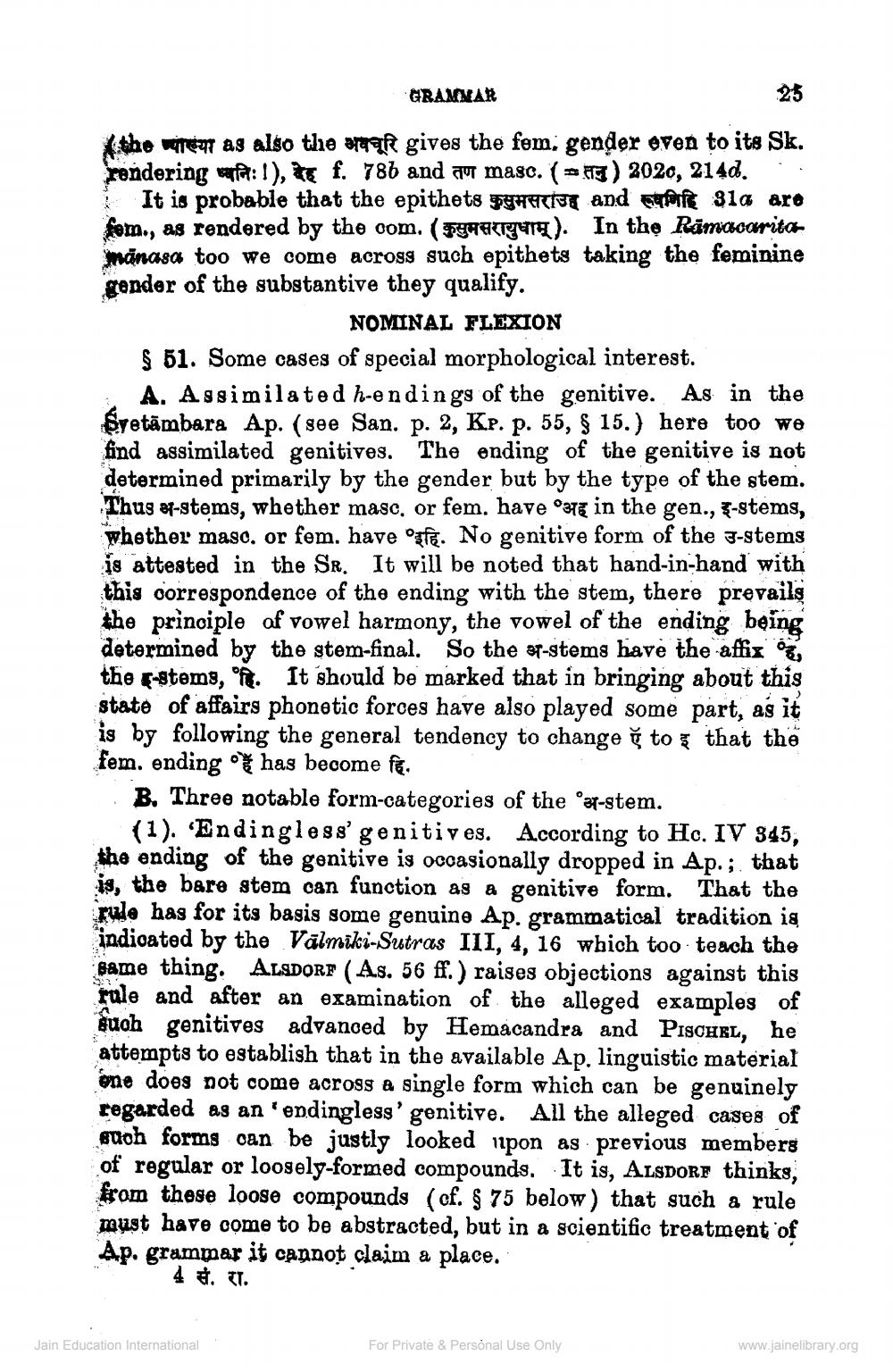________________
GRANNAR
the wore as also the areak gives the fem. gender even to its Sk. rendering wala:!), te f. 786 and au masc. (9) 2020, 214d. .
It is probable that the epithets F IT and more 31a are fom., as rendered by the oom. ( sacrum). In the Rāmcoaritar münasa too we come across such epithets taking the feminine gender of the substantive they qualify.
NOMINAL FLEXION $ 51. Some cases of special morphological interest.
A. Assimilated h-endings of the genitive. As in the Sretambara Ap. (see San. p. 2, Kp. p. 55, § 15.) here too we find assimilated genitives. The ending of the genitive is not determined primarily by the gender but by the type of the stem. Thus 8-stems, whether masc, or fem. have 37€ in the gen., 5-stems, whether masc. or fem. have ople. No genitive form of the 3-stems is attested in the Sr. It will be noted that hand-in-hand with this correspondence of the ending with the stem, there prevails the principle of vowel harmony, the vowel of the ending being determined by the stem-final. So the a-stems have the affix of the f-stems, °R. It should be marked that in bringing about this state of affairs phonetic forces have also played some part, as it is by following the general tendency to change ğ to s that the fem. ending of has become fe.
B. Three notable form-categories of the Pat-stem.
(1). Endingless' genitives. According to Hc. IV 345, the ending of the genitive is occasionally dropped in Ap.;. that is, the bare stem can function as a genitive form. That the rude has for its basis some genuine Ap. grammatical tradition is indicated by the Vālmīki-Sutras III, 4, 16 which too teach the same thing. ALSDORF (As. 56 ff.) raises objections against this rule and after an examination of the alleged examples of such genitives advanced by Hemacandra and Pischet, he attempts to establish that in the available Ap. linguistic material one does not come across a single form which can be genuinely regarded as an 'endingless' genitive. All the alleged cases of such forms can be justly looked upon as previous members of regular or loosely-formed compounds. It is, ALSDORF thinks, from these loose compounds (cf. § 75 below) that such a rule must have come to be abstracted, but in a scientific treatment of Ap. grammar it cannot claim a place."
4 #. T.
Jain Education International
For Private & Personal Use Only
www.jainelibrary.org




